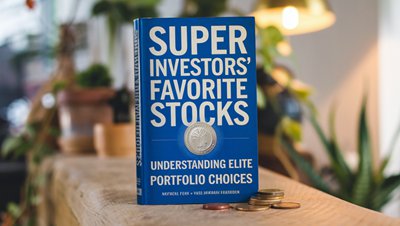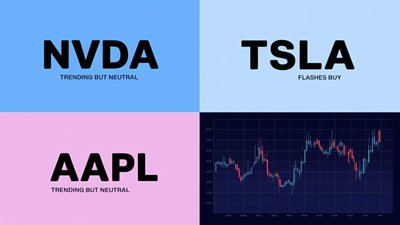XLV ETF: Tapping into Healthcare Demand from Aging Demographics
The Health Care Select Sector SPDR Fund (XLV) presents a compelling investment opportunity, particularly in the context of an aging and increasingly unhealthy global population. This report aims to provide a comprehensive analysis of XLV, synthesizing information from various sources to evaluate its potential as a robust investment vehicle. We will explore the fund’s structure, performance, and underlying market forces, while also considering expert opinions and recent developments to offer a balanced and insightful perspective.
Fund Overview
Structure and Holdings
The Health Care Select Sector SPDR Fund (XLV) is an exchange-traded fund (ETF) that tracks health care stocks within the S&P 500 Index. Launched on December 16, 1998, XLV has amassed assets totaling $39.97 billion. The fund boasts a low expense ratio of 0.09% and a price-to-earnings (PE) ratio of 25.12. XLV comprises 64 holdings, with the top 10 holdings accounting for 56.74% of its assets. Notable companies in the fund include Eli Lilly and Company, UnitedHealth Group, Johnson & Johnson, Merck & Co., and AbbVie Inc. The fund offers a dividend yield of 1.51% and has achieved a 1-year return of +14.32%.
Performance Metrics
XLV has demonstrated strong performance metrics, with a year-to-date (YTD) return of 9.54% and a 10-year annualized return of 11.04%. The fund’s Sharpe Ratio of 1.58 indicates a favorable risk-adjusted return. Despite a maximum drawdown of -39.18%, XLV is considered less risky compared to other healthcare ETFs like CURE, which has higher volatility and expense ratios.
Market Forces and Trends
Aging Population
One of the primary drivers of XLV’s potential is the aging global population. As life expectancy increases, the demand for healthcare services and products is expected to rise significantly. This demographic shift is likely to benefit companies within XLV’s portfolio, such as Johnson & Johnson and Merck & Co., which are well-positioned to cater to the healthcare needs of older adults.
Increasing Prevalence of Chronic Diseases
The rising prevalence of chronic diseases, such as diabetes, cardiovascular diseases, and cancer, further underscores the importance of healthcare investments. Companies like Novo-Nordisk and Eli Lilly, which specialize in treatments for chronic conditions, stand to gain from this trend. The growing burden of chronic diseases necessitates ongoing medical innovation and expanded healthcare services, both of which are integral to XLV’s holdings.
Technological Advancements
Technological advancements in healthcare, including telemedicine, personalized medicine, and biotechnology, are transforming the industry. These innovations not only improve patient outcomes but also create new revenue streams for healthcare companies. XLV’s inclusion of tech-savvy firms like UnitedHealth Group and AbbVie positions the fund to capitalize on these advancements.
Expert Opinions and Recent Developments
Mixed Reviews and Positive Outlook
Over the past 12 months, XLV has received mixed reviews from experts. While five analysts recommended buying the stock, one analyst advised selling. Despite this, the fund closed at $148.27 on July 12, 2024, reflecting a 0.62% increase. Some experts believe that XLV’s performance could improve in the second half of the year, driven by compelling earnings comparisons and sectoral growth.
Shannon Saccocia, CIO at Boston Private, has been particularly bullish on XLV. She recommended buying the fund on March 7, 2024, at $143.30, and reiterated her positive outlook on June 21, 2024, at $146.81. Saccocia highlighted the potential for sales growth in the healthcare sector, supported by strong earnings comps for the latter half of 2024.
Comparative Analysis
When compared to other healthcare ETFs, XLV stands out for its lower risk profile and expense ratio. For instance, CURE, another healthcare ETF, has a higher YTD return of 21.08% and a 10-year annualized return of 18.93%. However, CURE’s higher expense ratio of 1.08% and greater volatility make it a riskier investment. XLV’s balanced approach, combining steady returns with lower risk, makes it an attractive option for conservative investors.
Implications for Stakeholders
Investors
For investors, XLV offers a diversified and relatively low-risk entry into the healthcare sector. The fund’s strong historical performance, coupled with its focus on leading healthcare companies, provides a solid foundation for long-term growth. The low expense ratio further enhances its appeal, ensuring that investors retain a larger share of their returns.
Healthcare Companies
Companies within XLV’s portfolio stand to benefit from increased investment inflows, which can support research and development initiatives. As the demand for healthcare services grows, these companies are likely to see revenue and profit growth, further boosting their stock prices and, by extension, XLV’s performance.
Broader Market
The broader market may also experience positive spillover effects from the growth of the healthcare sector. As healthcare companies innovate and expand, they contribute to overall economic growth and job creation. Additionally, advancements in healthcare can improve population health, reducing the economic burden of chronic diseases and enhancing productivity.
Recent Events and Future Outlook
Recent Events
Recent events, such as the ongoing COVID-19 pandemic and geopolitical tensions, have underscored the importance of robust healthcare systems. These events have accelerated the adoption of telemedicine and other healthcare technologies, benefiting companies within XLV’s portfolio. Moreover, the pandemic has highlighted the need for resilient supply chains and increased healthcare funding, trends that are likely to persist in the coming years.
Future Outlook
Looking ahead, XLV is well-positioned to capitalize on several key trends. The aging population, rising prevalence of chronic diseases, and technological advancements in healthcare are all expected to drive demand for healthcare services and products. Additionally, the fund’s focus on leading healthcare companies with strong financials and innovative capabilities provides a solid foundation for sustained growth.
Conclusion
In conclusion, the Health Care Select Sector SPDR Fund (XLV) offers a strong investment opportunity for those looking to benefit from an aging and unhealthy population. The fund’s diversified portfolio, low expense ratio, and robust performance metrics make it an attractive option for conservative investors. While expert opinions are mixed, the overall outlook for XLV remains positive, supported by favorable demographic trends and technological advancements. As the healthcare sector continues to evolve, XLV is well-positioned to deliver long-term value to its investors.


